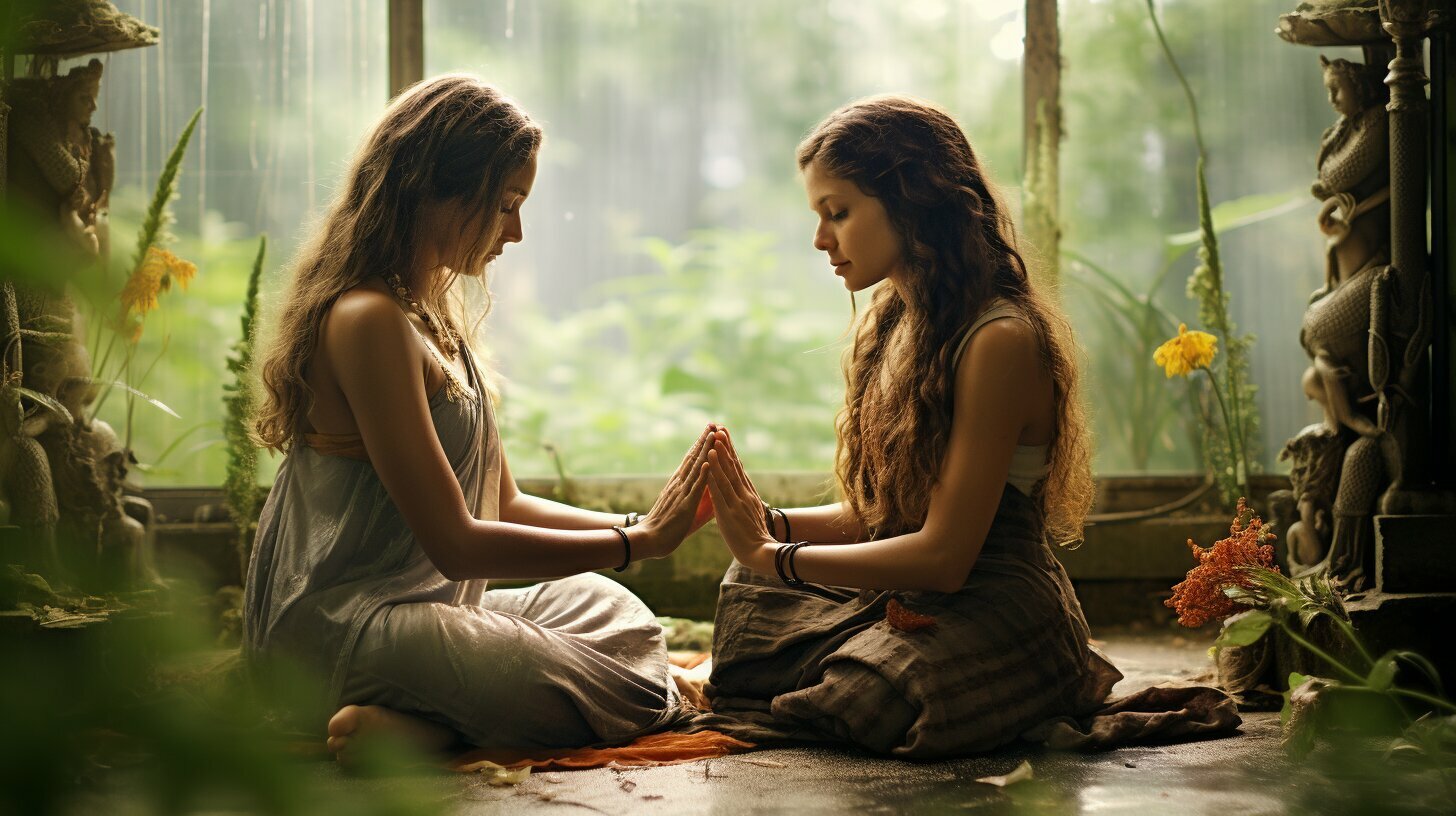Yoga is not just a physical practice; it is a complete lifestyle that encompasses values, traditions, and culture. One of the essential aspects of yoga culture is greetings. Yogis have their unique ways of saying hello, which reflect their respect, unity, and connection with others. If you’re new to yoga, you may be wondering, “how do yogis say hello?”
In this guide, we will explore the various ways yogis greet each other and delve into their significance in the world of yoga. We’ll discuss the most common greetings in yoga such as Namaste, Anjali Mudra, and Pranamasana, as well as the cultural significance of these greetings and their adaptation to modern practices.
- Yogis have unique ways of greeting each other that reflect their values of respect, unity, and connection with others.
- The most commonly used greeting in yoga is Namaste, followed by Anjali Mudra and Pranamasana.
- Greetings in yoga have cultural significance and reflect the traditions and values of the yoga community.
- As yoga evolves, so do its greetings, and it’s crucial to maintain proper etiquette.
- Greetings in yoga embody the spirit of unity, respect, and connection and are an integral part of the yogic culture.
Understanding Yoga Greetings and Salutations
Yoga is more than just a physical practice; it is a philosophy that emphasizes respect, unity, and connection. As such, greetings in yoga are an integral part of the practice, reflecting these values and creating a sense of community among yogis.
Traditional yogi greetings go beyond a simple “hello” and serve as a way to honor fellow practitioners and establish a shared intention for the practice to come. The practice of greeting one another with respect and mindfulness is deeply embedded in the culture of yoga and is seen as an essential aspect of yoga etiquette.
Yoga greetings range from verbal to non-verbal and come in various forms, including hand gestures (known as mudras) and full-body salutations. These greetings serve as a way to balance and align the energies in the body and prepare the mind and body for the practice to come.
While yoga greetings have evolved over time, their significance has remained constant. By understanding and embracing traditional yogi greetings, we can deepen our practice, connect with others in the yoga community, and honor the roots of this ancient practice.
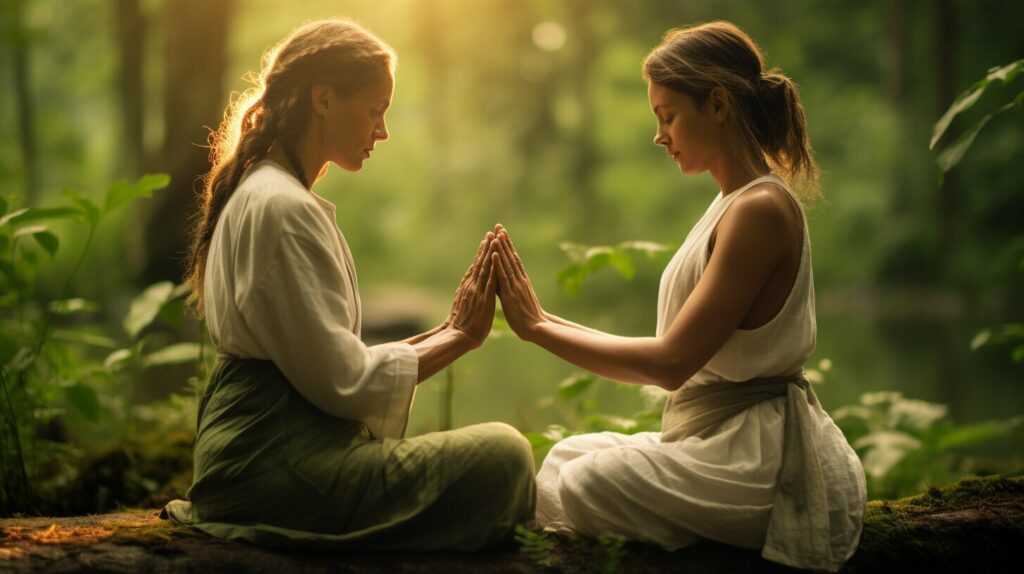
“Yoga allows you to find an inner peace that is not ruffled and riled by the endless stresses and struggles of life.” – B.K.S. Iyengar
Namaste: The Universal Greeting in Yoga
When it comes to yoga greetings, the word “namaste” is often the first that comes to mind. This simple but powerful greeting is used in almost every yoga class and reflects the core values of yoga: unity, respect, and connection.
Derived from Sanskrit, Namaste is often translated as “I bow to you” or “the divine in me honors the divine in you.” It symbolizes the recognition of the inner light and divinity in ourselves and others, regardless of our differences.
Performing namaste is simple but requires a level of mindfulness and heart-centeredness. First, bring your palms together in front of your heart, keeping your fingers pointing towards the ceiling. Then, bow your head slightly while saying “namaste” or simply holding the gesture in silence.
Namaste is not just a greeting but also an expression of gratitude, respect, and love. It is a way of honoring the yoga practice and those around us. In yoga classes, it is often used to acknowledge the teacher and fellow students. Outside of yoga, it can be used as a general greeting or expression of goodwill.
Properly performing namaste is essential in yoga etiquette and shows respect for the practice and those around us. It is encouraged to use this greeting in place of a handshake or hug, especially in yoga settings.
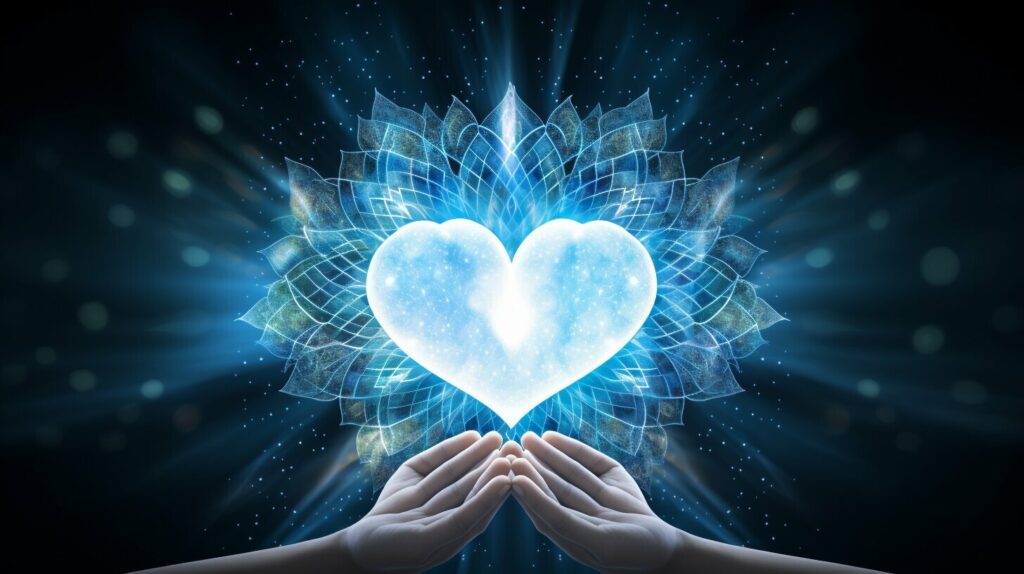
“Namaste. It’s a simple acknowledgment of the soul in one by the soul in another.”
Anjali Mudra: The Gesture of Reverence
In yoga, greetings aren’t just about saying hello – they are a way to show respect and unity in the community. Anjali Mudra is a hand gesture that represents this spirit of reverence. It is a simple yet powerful gesture that can be used as a greeting or during meditation.
The word ‘anjali’ comes from the Sanskrit language, which means ‘to offer’ or ‘to salute.’ Mudra means ‘seal’ or ‘gesture.’ When we join our hands in Anjali Mudra, we are offering a gesture of respect and salutation to the divine, as well as to each other.
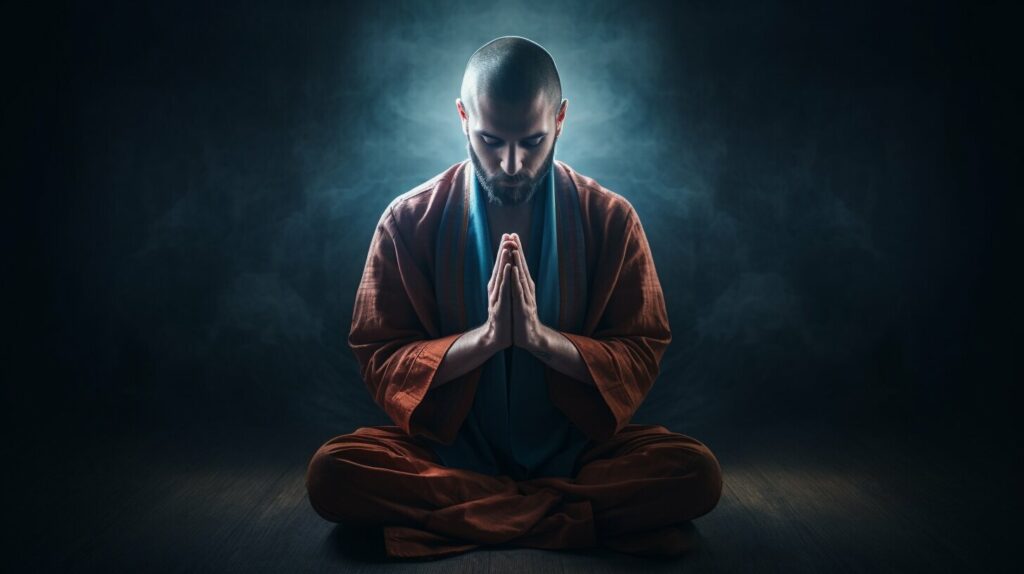
To perform Anjali Mudra, bring your palms together at the center of your chest, fingers pointing upwards, and thumbs lightly pressing into your sternum. Keep your shoulders relaxed and your elbows lifted, creating a heart-opening posture.
Anjali Mudra is a common greeting in many yoga classes and is often used at the beginning and end of a practice. It is also used during meditation and pranayama (breathing exercises) as a way to center and focus the mind.
Like many yoga greetings, Anjali Mudra symbolizes our connection and unity with each other and all beings. It is a reminder of the underlying oneness that exists within us all. By incorporating Anjali Mudra into our practice, we can cultivate a deeper sense of respect and reverence for ourselves, each other, and the world around us.
Pranamasana: The Prayer Pose
Pranamasana, also known as the prayer pose, is a common yoga greeting that involves placing the palms of the hands together in front of the heart chakra or the third eye. This gesture represents an acknowledgement of the divine within oneself and others. The word “pranam” means salutation or greeting in Sanskrit, and “asana” means pose or posture.
To perform pranamasana, stand tall with your feet together, arms at your sides. Take a few deep breaths, and bring your hands together in front of your heart chakra with your fingers pointing upwards. Press the palms together, and gently bow your head. Close your eyes and take a moment to connect with your inner self and set your intention for your practice.
Pranamasana is often used to begin and end yoga classes, and can be done with or without saying “Namaste” as a verbal greeting. In some traditions, pranamasana is accompanied by a mantra or prayer, such as “Om Shanti” which means peace for all beings.
Pranamasana is a powerful gesture of respect and gratitude towards oneself, others, and the divine. It symbolizes unity and fosters a sense of community in the yoga practice.
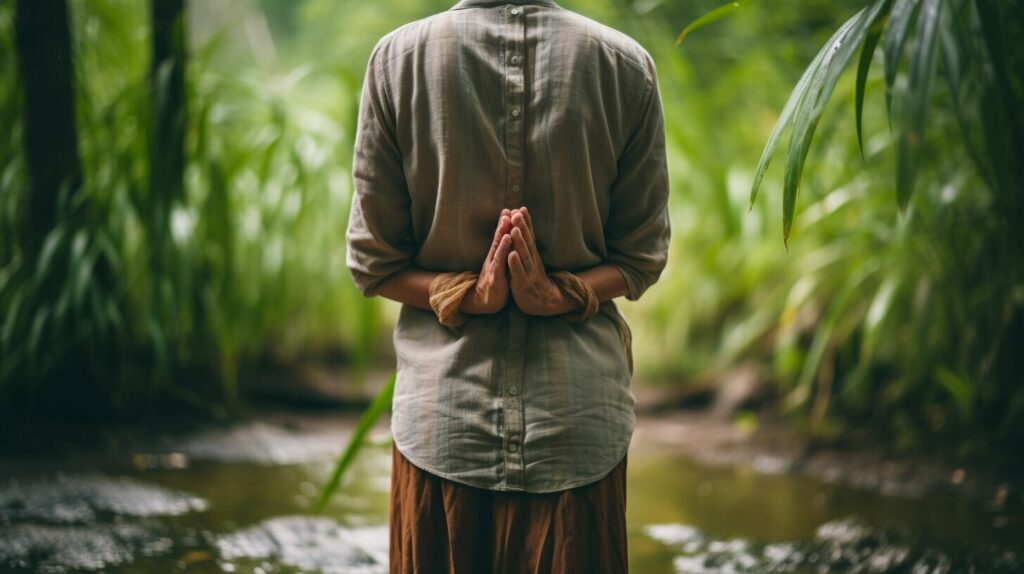
In addition to serving as greetings, certain yoga poses also balance and align the energies in the body. These are known as yogic salutations or greetings.
One of the most popular salutations is Surya Namaskar, which translates to “sun salutation.” This sequence of poses is performed at the beginning of a yoga practice to honor the sun and awaken the body’s energy centers. Surya Namaskar consists of a series of twelve poses that flow together seamlessly, including forward folds, lunges, and upward-facing dog.
Another popular salutation is Chandra Namaskar, or “moon salutation.” This sequence of poses is performed at the beginning of a yoga practice to honor the moon and balance the energy in the body. Chandra Namaskar consists of a series of poses that flow together seamlessly, including forward folds, lunges, and goddess pose.
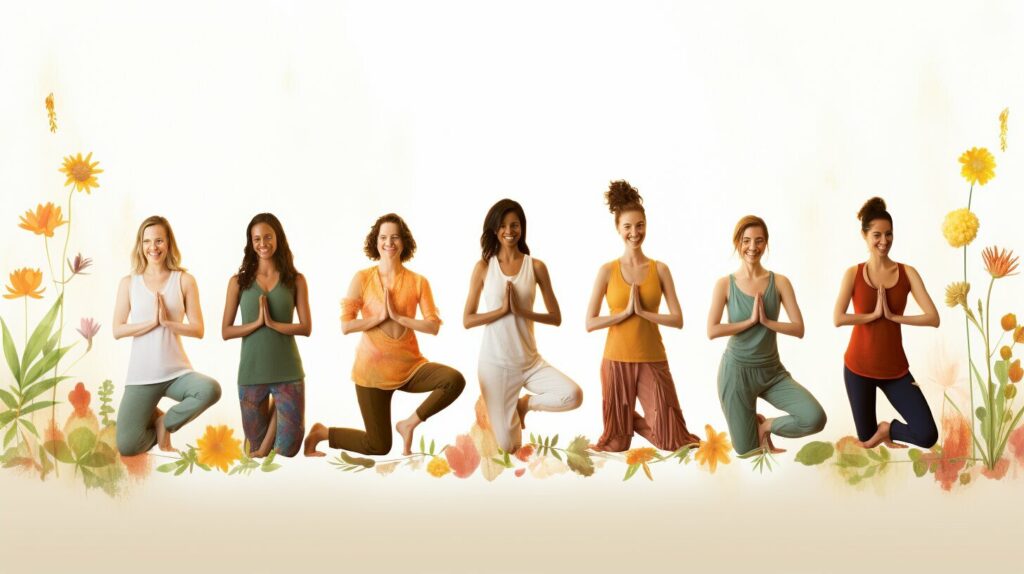
These salutations serve not only as greetings but also as a way to connect with the elements and energies around us, bringing balance and harmony to our bodies and minds.
Cultural Significance of Yoga Greetings
Greetings in yoga are not just a way to say hello; they also reflect the traditions and values of the yoga community. Yoga has its roots in ancient Indian culture, where respect for one’s elders, teachers, and spiritual leaders is paramount.
Yoga greetings, such as Namaste and Anjali Mudra, embody this sense of respect and reverence. Namaste, for instance, literally means “I bow to you” and is a gesture of humility and gratitude towards others. Anjali Mudra, on the other hand, is a symbol of respect and devotion often used to honor deities or spiritual gurus.
Yoga culture also emphasizes the importance of connection and unity among its practitioners. Greetings in yoga serve as a way to acknowledge and connect with one another, creating a sense of community and shared purpose.

Moreover, yoga is a practice that celebrates diversity and inclusivity. Greetings in yoga are a way to welcome and embrace individuals from all backgrounds and walks of life. By respecting and honoring others through these greetings, we create a space of acceptance and belonging.
As such, understanding and practicing yoga greetings is essential to maintaining the integrity and spirit of yoga culture. By embodying the values of respect, unity, and connection in our greetings, we honor the rich cultural heritage of yoga and uphold the principles that make it a transformative practice.
Adapting Greetings in Modern Yoga
As the world of yoga evolves, so do its greetings. While traditional greetings like namaste, anjali mudra, and pranamasana remain fundamental, new greetings have emerged to adapt to modern yogic practices. It is essential to understand and maintain proper yoga etiquette to honor the cultural significance of greetings in yoga.
One popular adaptation to yogic greetings is the use of the phrase “yogi hello.” This greeting is a fusion of modern language and traditional yogic culture, reflecting the blend of ancient and contemporary practices found in modern yoga. It is a friendlier and more casual alternative to traditional yogic greetings, reflecting a more modern approach to yoga.
Another adaptation is the use of non-Sanskrit greetings. While traditional greetings are deeply rooted in Sanskrit, modern yoga has seen the emergence of greetings and salutations in different languages. These new greetings may reflect the diverse backgrounds of yogis or pay homage to different cultures and traditions. Still, it is essential to maintain respect for the origin and meaning of traditional greetings in yoga.
Lastly, in the modern era, online and virtual yoga have become increasingly popular, changing the way yogis interact with each other. Today, yogis can connect with others worldwide, creating a global yoga community that transcends borders and boundaries. However, adapting greetings to virtual platforms can be challenging, and new rules of etiquette may need to be established to reflect this new era of yoga.
Overall, adapting greetings in modern yoga can reflect the evolution of the practice and allow for more significant inclusivity and connection. Still, it is vital to maintain respect for the cultural significance of traditional greetings and honor the spirit of unity and respect that they embody.

Remember, regardless of the type of greeting used, it is essential to approach other yogis with respect and humility. By doing so, we can cultivate a strong and supportive yoga community built on the foundation of mutual respect and appreciation.
Non-Verbal Greetings in Yoga
Yoga greetings are not always verbal. Yogi hello can be with a smile, eye contact, or a nod of the head. These non-verbal greetings are equally important in yoga culture, as they convey warmth and acknowledge the presence of other yogis. In fact, some yoga teachers encourage non-verbal greetings as a way to cultivate a deeper sense of mindfulness and connection. By making eye contact or offering a smile, yogis can establish a meaningful connection with each other without the need for words.
It’s worth noting that not all yogis are comfortable with physical touch, so non-verbal greetings are a great way to acknowledge others without making physical contact. Moreover, non-verbal greetings can be especially useful in online yoga classes, where physical touch is not possible.
While non-verbal greetings may seem simple, they are an essential part of the yogic practice. They help to build a sense of community and foster a supportive environment that encourages yogis to connect with each other. So, don’t underestimate the power of a smile or a nod during your next yoga class.

As we have explored in this article, greetings in yoga serve as more than just a simple hello. They are a reflection of the yogic philosophy of unity, respect, and connection. By embracing yogic communication, we can enhance our practice and deepen our connection with fellow yogis.
When practicing yoga, it is important to remember the significance of greetings and to approach them with intention and mindfulness. Whether it’s a verbal greeting like “namaste” or a non-verbal gesture like a smile or a nod of the head, each greeting carries meaning and intention.
As you continue your yoga journey, take time to reflect on your approach to greetings and communication with others in the yoga community. Remember that yoga is not just about the physical practice, but also about creating a sense of unity and respect with those around us.
So the next time you step onto your mat, take a moment to greet your fellow yogis with intention and mindfulness. Whether it’s a traditional yoga greeting or a simple smile, embrace yogic communication and foster a deeper sense of connection and unity within the yoga community.
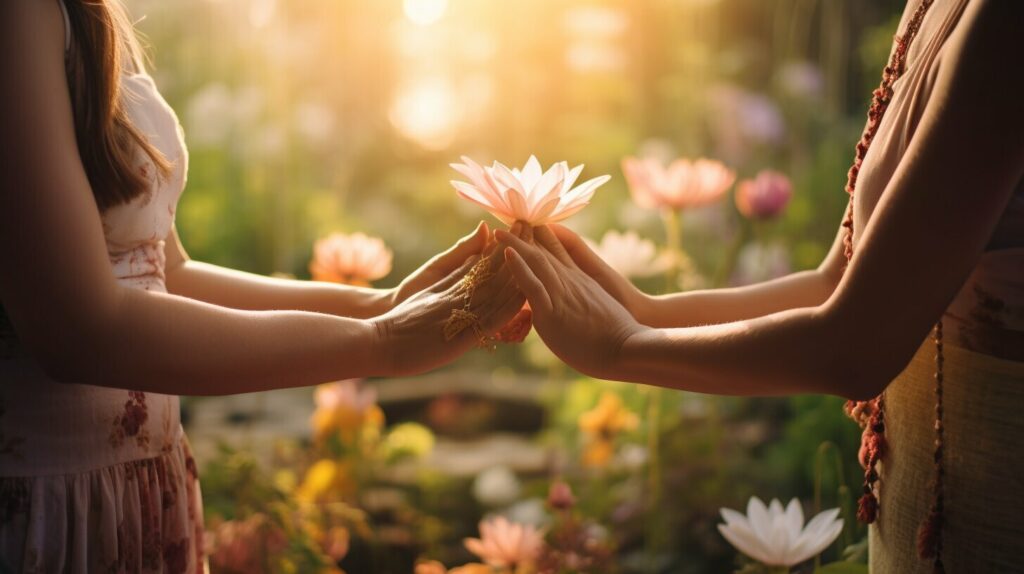
In conclusion, greetings and salutations in yoga are not just a form of politeness, they are an essential aspect of yogic culture that reflects the values of respect, unity, and connection. Yogic salutations such as Surya Namaskar and Chandra Namaskar not only serve as greetings but also balance and align the energies in the body.
Understanding and embracing yogic communication can enhance your yoga practice and create a sense of community among fellow yogis. Maintaining proper etiquette, both in verbal and non-verbal communication, is crucial in upholding the traditions and values of the yoga community.
By appreciating the cultural significance of yoga greetings, such as the common greeting of Namaste and hand gesture of Anjali mudra, we can deepen our practice and foster a sense of unity and respect among fellow yogis. Let us continue to embrace the yogic culture and its greetings as we embark on our yoga journey.
FAQ
Q: How do yogis say hello?
A: Yogis say hello through various greetings and salutations, such as namaste, anjali mudra, and pranamasana. These greetings reflect the yogic philosophy of respect, unity, and connection.
Q: What is the significance of yoga greetings?
A: Yoga greetings hold cultural significance and reflect the traditions and values of the yoga community. They serve as a way to honor and connect with others, fostering a sense of unity and respect among fellow yogis.
Q: What is namaste and how is it performed?
A: Namaste is the most commonly used greeting in yoga. It is performed by pressing the palms together in front of the chest and bowing the head slightly. Namaste signifies the divine in each person and is a way of acknowledging and honoring the spirit within oneself and others.
Q: How do I perform anjali mudra?
A: Anjali mudra is a hand gesture often used as a greeting in yoga. It is performed by bringing the palms together in front of the heart, fingers pointing upward. Anjali mudra signifies reverence and is a way of showing respect to oneself, others, and the practice of yoga.
Q: What is pranamasana?
A: Pranamasana, also known as the prayer pose, is another common greeting in yoga. It is performed by standing tall with the palms pressed together in front of the heart. Pranamasana symbolizes gratitude, respect, and the coming together of physical and spiritual energies.
Q: Are there non-verbal ways of greeting in yoga?
A: Yes, in addition to verbal greetings, yogis often greet each other with a smile, eye contact, or a simple nod of the head. These non-verbal gestures embody the spirit of unity and connection in the yoga community.
Q: How have yoga greetings adapted to modern practices?
A: As yoga evolves, so do its greetings. While traditional greetings like namaste and anjali mudra are still widely used, modern yoga has also incorporated new forms of greetings that reflect the changing landscape of the practice. It is important to maintain proper etiquette and respect when adapting greetings in modern yoga.
Q: What is the cultural significance of yoga greetings?
A: Yoga greetings have cultural significance and reflect the traditions and values of the yoga community. They embody respect, unity, and connection, and serve as a way to honor and connect with others in the yoga world.
Q: How can embracing yogic communication enhance my yoga practice?
A: Embracing yogic communication, including greetings, can enhance your yoga practice by fostering a sense of unity, respect, and connection with others. It creates a supportive and welcoming environment where everyone can deepen their practice and share in the joy of yoga.
